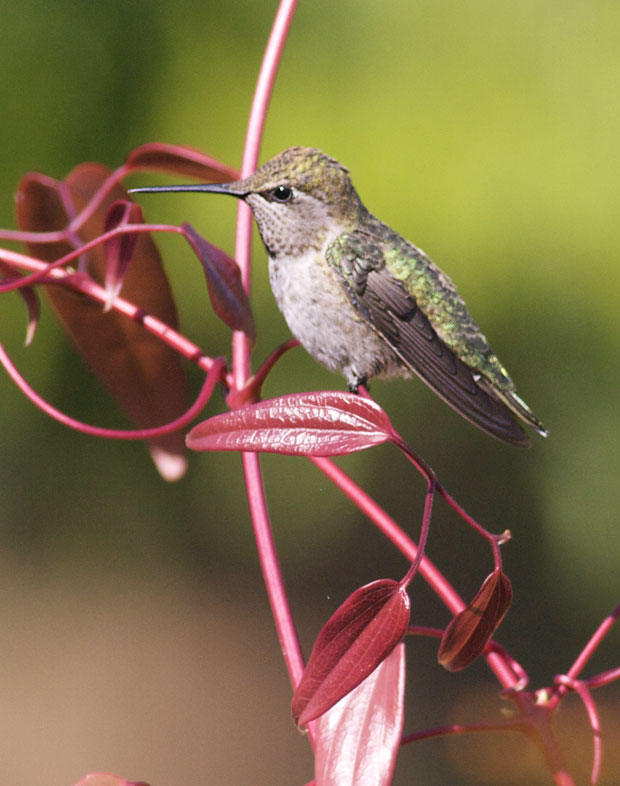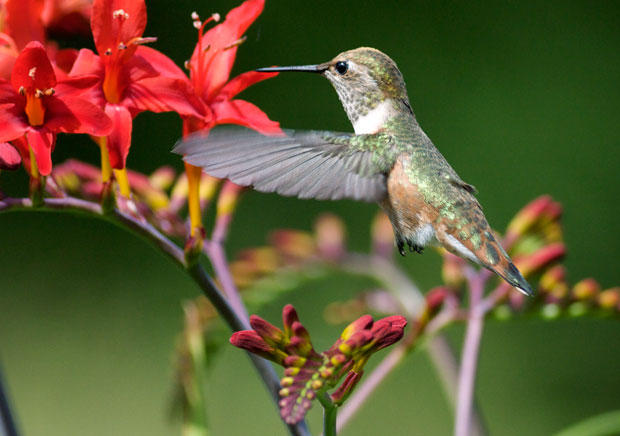The Crocosmia have finally started to bloom, and I’ve been spending much of my extra time, the time I’m not spraying weeds, digging out bamboo, and such, sitting on the front porch waiting for the hummingbirds to return.
Last night I spent a good ten minutes within three feet of one discussing the beautiful weather. Of course, that conversation was only possible because I didn’t have my camera with me.
The little guys don’t sit very long when you are carrying a camera as they seem to be awfully camera shy. I still haven’t figured out if all the shots are of one hummingbird or they are of several different hummingbirds. For instance, is this hummingbird

the same hummingbird as this one? If so, why do the colors look so different?

I know from the past that both Anna and Rufous hummingbirds will show up at different times, but I’m not always able to tell the difference, particularly if they are females.
Not that it really makes any difference. I’m fascinated with all of them.

We’ve got a patch of four-o’clocks in the back yard that hummingbirds visit every evening. Even after all of these years there’s something magical about them, like a visit from a fairy.
It may help you to know that females are larger then the males. There are important reasons for this. Female hummingbirds are solely responsible for the care and rearing of the young. Therefore, the females need to be a tiny bit bigger to be able to produce eggs, to afford to share their body heat with the eggs while incubating, and to be able to share their food when feeding nestlings. Male hummingbirds are the tiniest warm-blooded animals on the planet.
Whenever you are trying to identify a male or female hummingbird take a look and see if the bird has brilliant iridescent throat feathers. This will tell you the bird is a male. Only male hummingbirds have the brilliant iridescent throat feathers. These feathers serve two very important functions: attracting a female and defending their territory. They use these to display to one another. Females find it attractive, and other males are repelled. Male hummingbirds are extremely feisty and territorial and these feathers are part of their territorial display.
Having a conversation about the weather with a hummingbird is an intriguing idea. (I know that’s not what you meant, but the idea crept into my head anyway!) I wonder what they’d say… do they speak as quickly as they fly? Would they speak about nectar like wine-tasters?
What spectacular detail in that second photograph – beautiful! Years ago (maybe about 15) I saw a photo in the TNT of a hummingbird sipping nectar from a woman’s open mouth. Does this ring a bell? I would love to find that image. One of these days, by golly…
I do have vague memories of that, Cynthia, though I don’t think I want to try that personally.
wow beautiful beautiful.